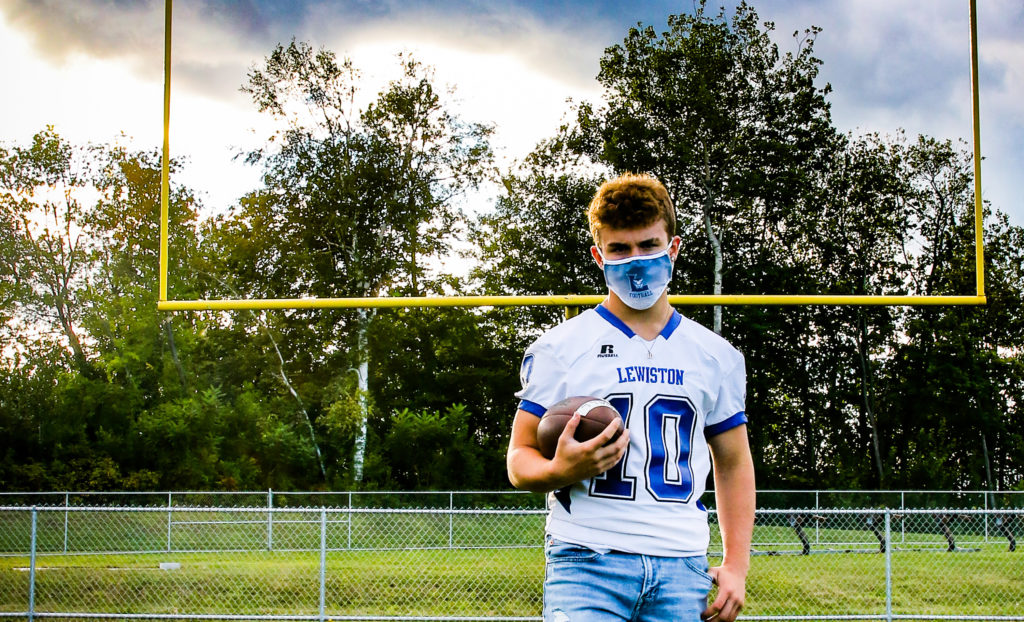Crafting the new year for Lewiston Public Schools under COVID-19

By Nathan Tsukroff
LEWISTON – A commitment by the Lewiston Public Schools in the spring of 2020 to give parents a choice of in-person or remote schooling was “kind of our springboard” to crafting the new school year under the restrictions brought on by the COVID-19 pandemic.
“We knew that we were going to have the remote option, and we were going to have to find out which parents wanted which option” for classes starting in the fall of 2020, according to newly-appointed Superintendent Jake Langlais.
Langlais took over as interim superintendent for the schools in July when previous Superintendent Todd Finn resigned for health and personal reasons after just a year in the position. Langlais had been the Lewiston High School principal since 2017, and was previously principal at the Lewiston Middle School.
“And then when we looked at the physical size of our district, and at least the estimate, at the time, of who wished to be remote, we had as many as the high 70’s and low 80’s percent” of parents who wanted their children to attend school in-person, he said. “So when the (State of Maine) guidelines came out at the end of July, we looked at our projection of students that we thought wanted to come to school, and we took that number and started looking at the social-distancing requirements. And that’s when we knew that if this number stays that big, or gets bigger, we were going to have to cut this group in half somehow.”
At the same time, the school district was looking at providing additional support for students, and trying to determine how to provide office hours for teachers to be available for students. “And also some planning around social/emotional” needs of the students as they deal with the stress and trauma of dealing with the pandemic, Langlais said.
“And so that led us to say, okay, if we’re splitting our groups, what’s the best way to do this? Is it an alternating – is it a Monday/Tuesday, nothing Wednesday, then a Thursday/Friday?” he said. “The picture started to paint itself, because we landed in a place where our available staff and our parent desire to be in school” pointed to two cohorts, or groups of students, that would attend split sessions at the schools.
The district also looked at students who might have special education needs, and students who would attend the Lewiston Regional Technical Center, which provides “a pretty specialized program” for students from six schools in the area, Langlais said. The requirements of the programs at LRTC generally means students must attend in-person four days a week.
That led the district to create four cohorts, starting with cohort A, which attends classes in-person on Monday and Tuesday each week, with remote learning on Wednesday, Thursday and Friday. Cohort B attends in-person on Thursday and Friday, with remote learning on Monday, Tuesday and Wednesday.
Students who opted for only remote schooling make up Cohort C. These students are being taught mostly by dedicated teachers who are doing just remote classes,” he said. “In most cases, we had enough students who wanted to be remote that we could take a group of teachers and have them do just remote teaching.” More than 100 students each at the elementary schools, “and a pretty high number (of students) at the middle and high school” have chosen remote schooling.
Cohort D is made up from students in the vocational classes, technical education classes, and some of the district’s “special populations”, Langlais said. This group of students will attend school in-person four days a week, although limits on staffing mean some classes may not be possible this school year.
The district has around 5500 students, and about 1100 staff members.
For the remote sessions, whether hybrid or full-time, students are being provided with computers to connect to the schools for classwork over the internet. The district received Mifi cellular “hot spot” devices from the State of Maine last spring, and provides them to families that need internet access. The Mifi devices connect to the Verizon cellular network to provide wifi internet access, but cannot be used for phone calls.
Students connect remotely over apps that include Zoom and Google Classroom, along with the Seesaw learning app for the younger grades.
Langlais said there are some supply-chain issues, which means some students will have to wait for needed hardware.
Last week was the first day of school for the new year, “and the energy was incredible!” Langlais said. Wednesday was a full remote day, where teachers had the choice of coming to their schools or working from home. Students had remote activities and teacher support sessions on Wednesday.
Splitting the classes into two groups means that 10 or fewer students are in a classroom, wearing face masks and properly separated under mandated guidelines. Lunches are delivered to students in classrooms by the nutrition program staff, and students are allowed to remove face masks for eating, while remaining at least six feet apart from other students.
The district staff “did a lot of brainstorming” as well as sharing ideas with other school districts to arrive at this final model for the school year, Langlais said. Schools in Maine also built on the knowledge of schools in the southern and western states which opened earlier in the summer.
Teachers who needed to stay out of the buildings due to concerns over the spread of the virus are generally able to work with students remotely, so most of teachers in the district have remained on staff.
The other big impact for Maine schools is the requirement for social separation in sports. The Maine Principals Association just recently set guidelines that do not allow for tackle football games between schools. Students on the Lewiston teams will be able to scrimmage against each other, but not play in the traditional games against other schools. The district is looking at the possibility of 7-on-7 football, “which is more of a flag football” game, Langlais said.
The district is considering an abbreviated football season this spring, with competition between schools, although that will depend on the trend in the pandemic infections in the area.
Indoor volleyball is not allowed, and may be moved outdoors.


